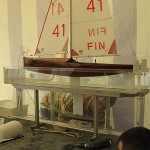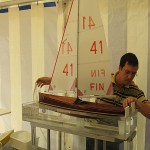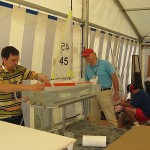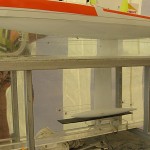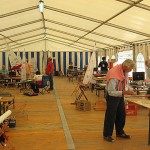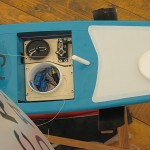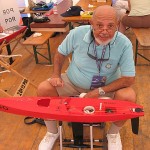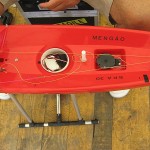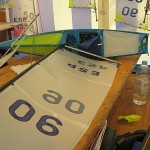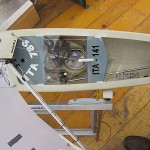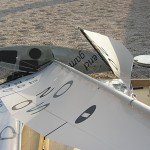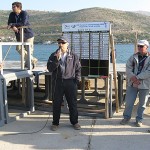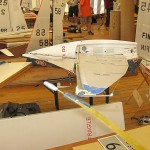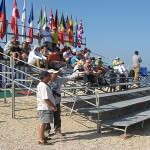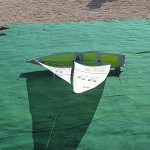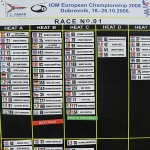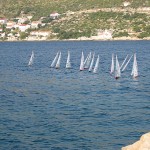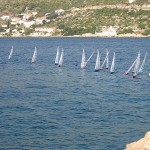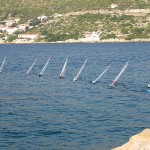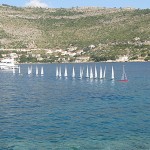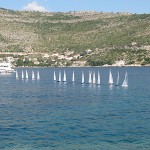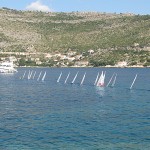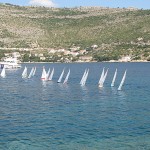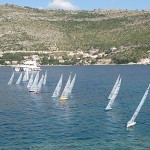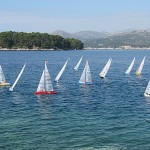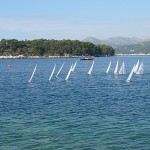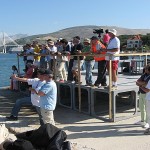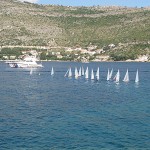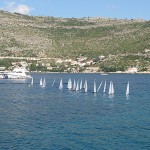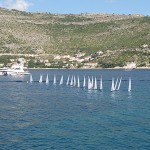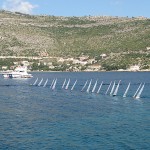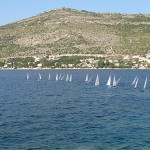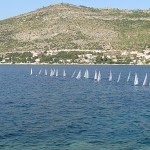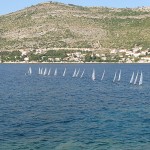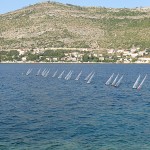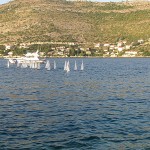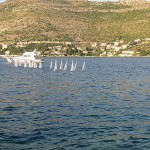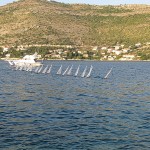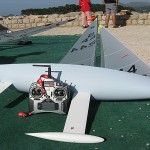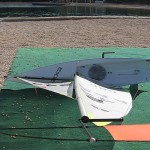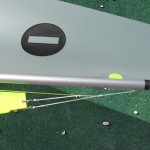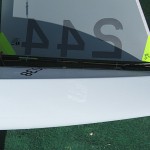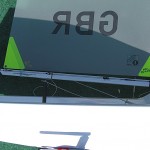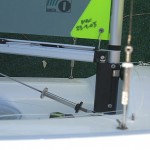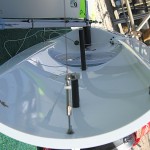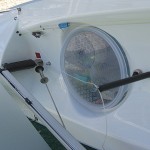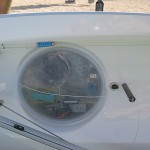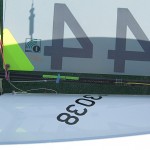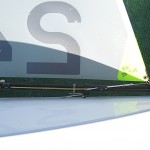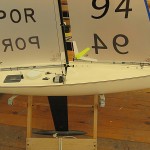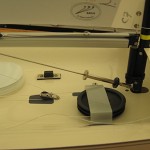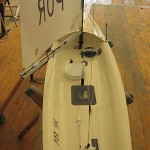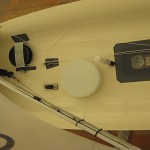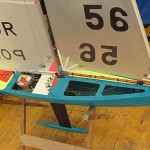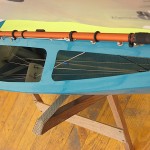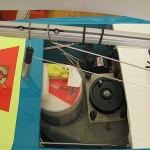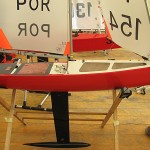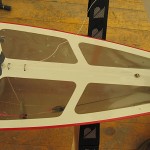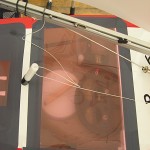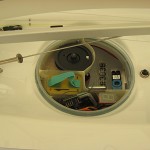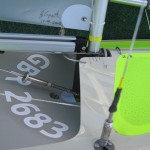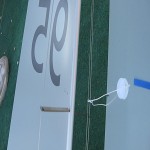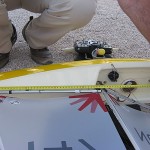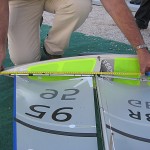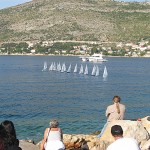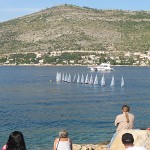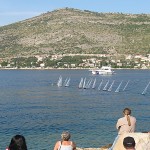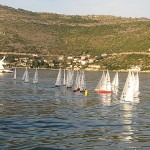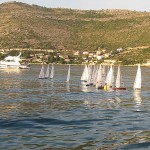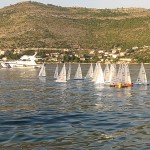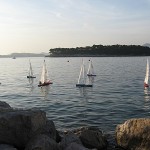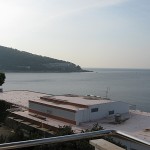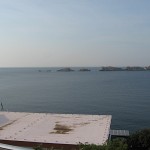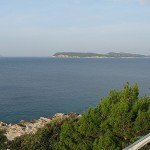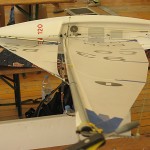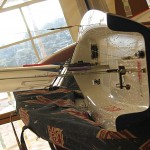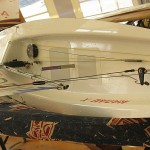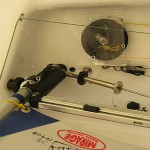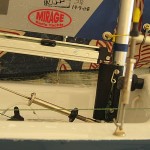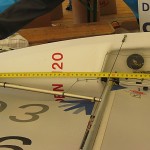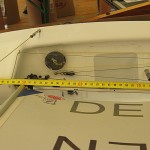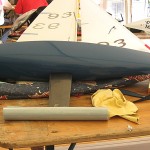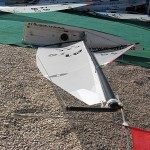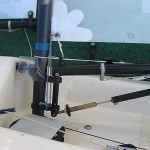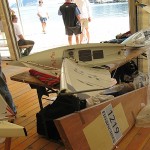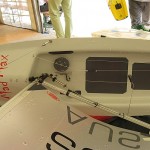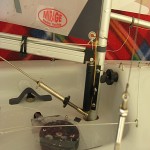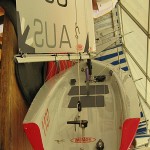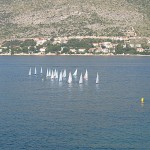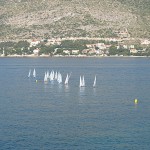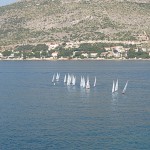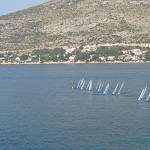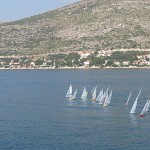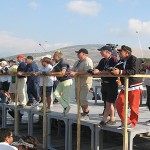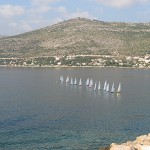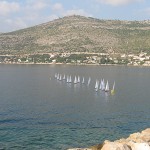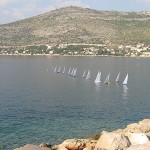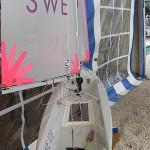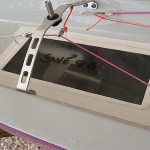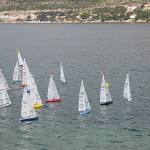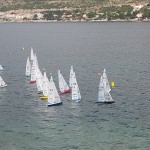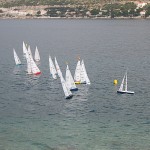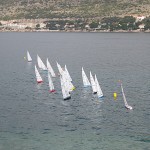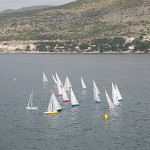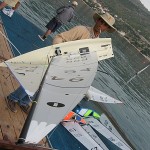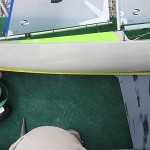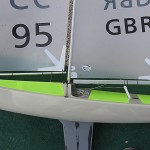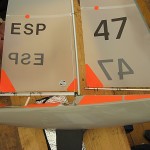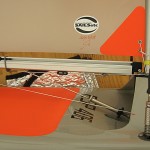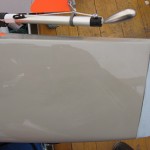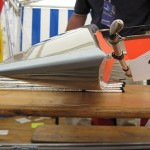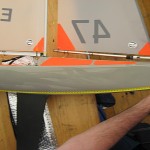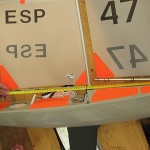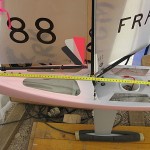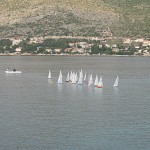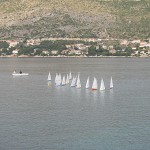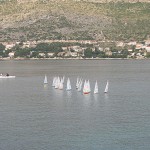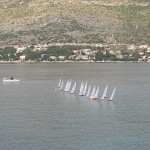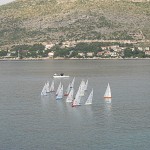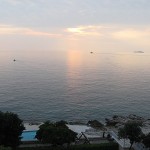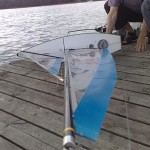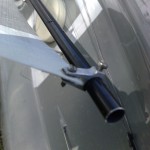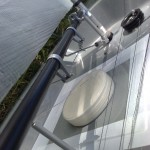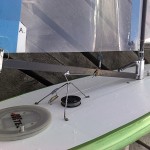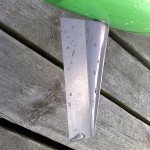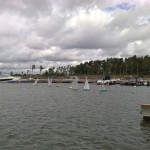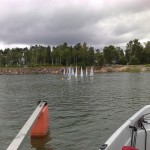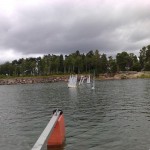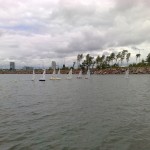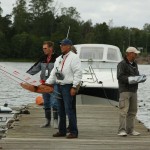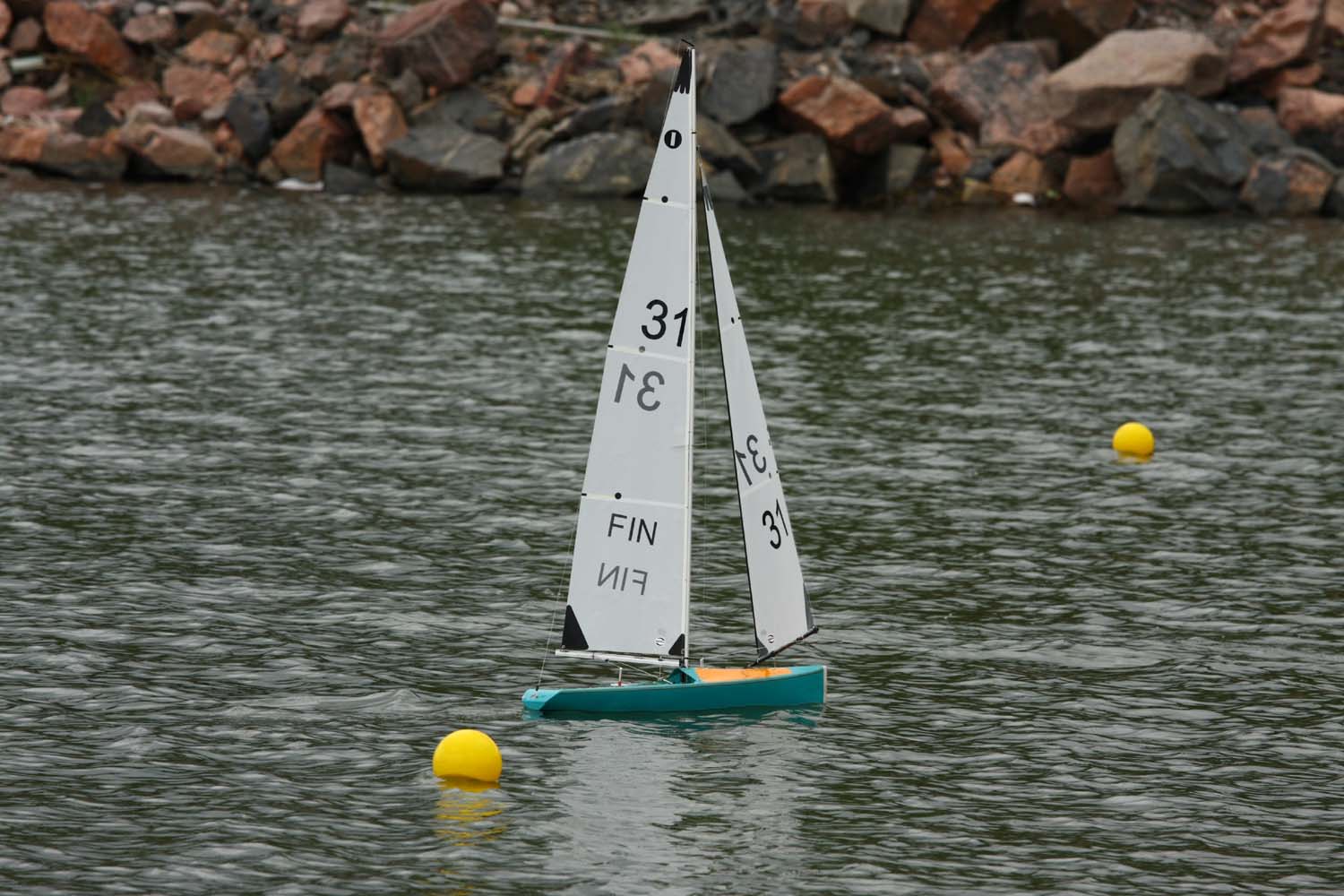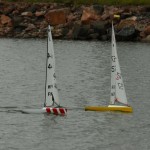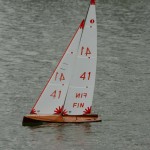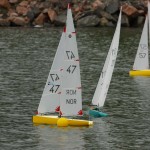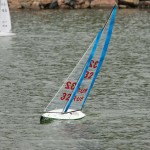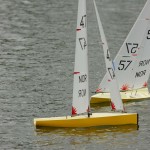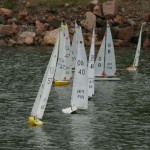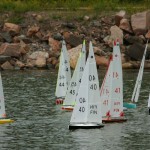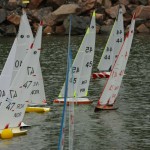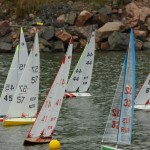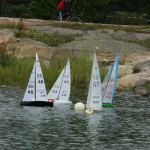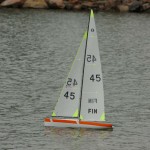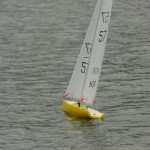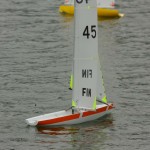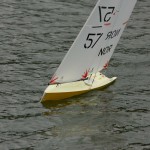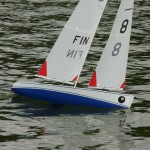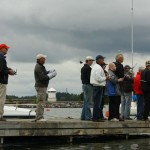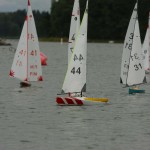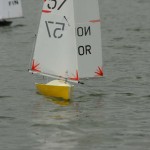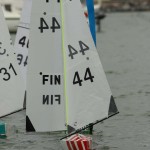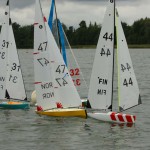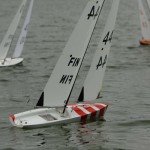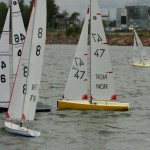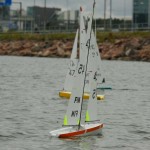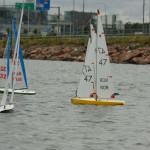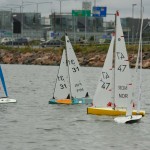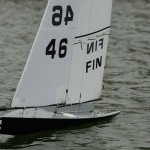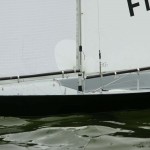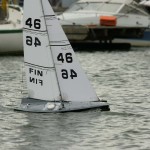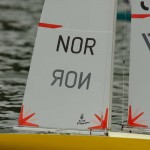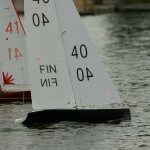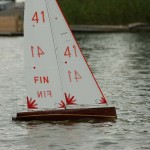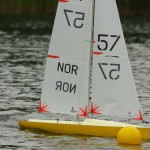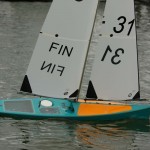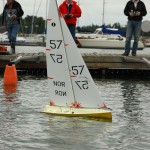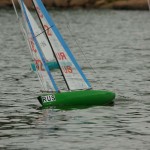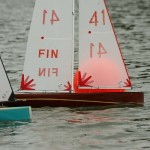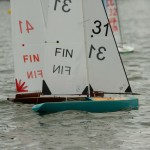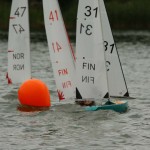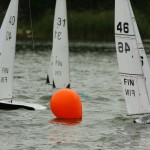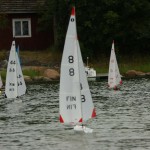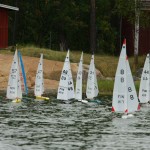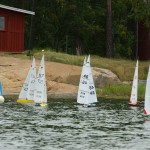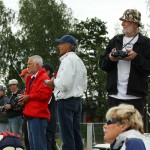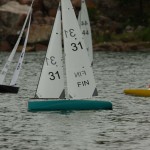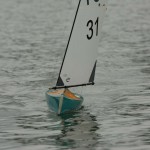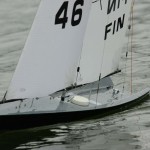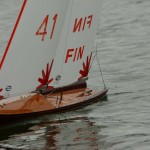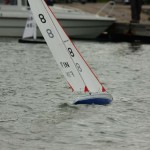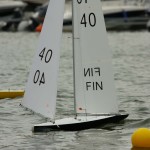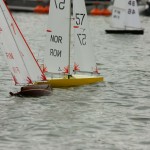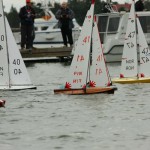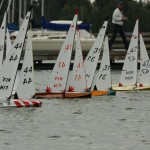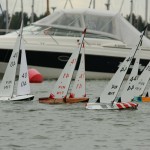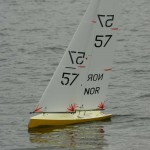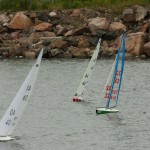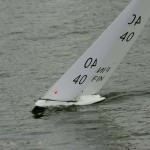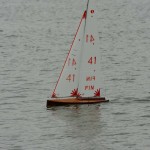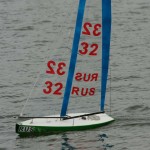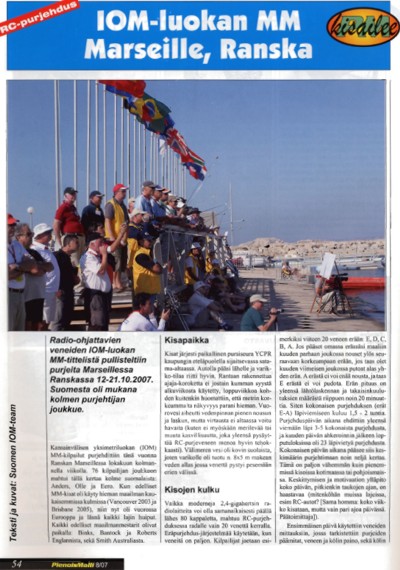Pictures by Eero Laurila and Olle Martonen from the 2008 IOM European Championships last week in Durbovnik, Croatia.
Category: IOM Events
KLV IOM ranking race
10 boats, including two guest sailors from Russia with Naviga one-metres, completed 12 races in varying no1 rig conditions.
The pictures show some cnc-milled aluminium fittings by Jari Immanen, and Oleg Konka's RUS-32, a Naviga one-metre built by Janus Walicki. Note the rudder. The forward section has an airfoil shape while the aft half of the rudder is a very thin and flexible carbon sheet.
IOM Nordic Cup, race 2
Update: Thanks to Jorma Ojama for sending me some nice pictures from the first six races!
Race 2 of the IOM Nordic Cup (also known as the Scandinavian Cup, although that name is much longer and geographically incorrect) was sailed on 9 Aug 2008 at NJK Björkholmen. Only ten skippers showed up, probably partly because Helsinki/Finland is far away, but also because our own Finnish ranking series has seen a decline in participants this year (could smaller more readily available boats solve this?). 12 races in a shifting westerly wind were completed.
Results on iom-nordic.org
Race 3 of the series will be sailed on 20-21 September in Prestø, Denmark
Helsinki Model Expo 2008
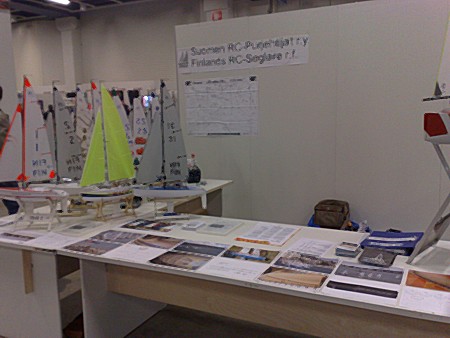
Model Expo along with cats, dogs, snakes, and Llamas at PetExpo, and everything family-ish you can imagine at Child'08 happened over this weekend at the Helsinki fair centre. Like last year (see here and here), we had the MicroMagic's sailing in the pool. This year with four less noisy fans and up to 10 boats.
The RC-pilots were only allowed to fly in a large hall with a net separating the planes from the public, but after the doors had closed the braver pilots did some flying over the pool!
IOM Worlds report in Pienoismalli
I wrote a short report from the Marseilles IOM-Worlds which appears in the latest issue of Pienoismalli.
More Marseilles pics
Here's David Potter's GBR20 Lintel. Note how high the gooseneck is. The boat is not so fast in light weather, so this is an attempt to get the rig higher up and gain some speed in the light stuff. Home-made gooseneck with laser-cut stainless steel bearing holders at the top and bottom (note adjustable holder at the bottom), and a carbon swivelling part. David also has the auto-adjusting cunningham arrangement with the line threaded around the mast. It's not very visible from this picture, but the mast-ram is attached to the mast - so there are three mast rams that stay with each rig, and the correct adjustment stays with the rig. Gelcoat on foredeck has been left out to save weight.
laser-cut ss spreaders. They look nice and work well but are not detachable for transport like the normal ones. They rotate to be parallel to the sail, but still stick out a bit more than normal spreaders do.
laser cut hooks for jib and toppinglift, and below that a separate hook for the shrouds. Note how low the jib attaches compared to the middle measurement band - that's because the mast and mainsail are higher up due to the high gooseneck. Rake adjustment with multiple holes in the mast.
Laser cut ss mast crane.
A box full of laser-cut parts.
Pierre gonnet had some fittings on display.
Gooseneck fittings.
some black bottlescrews for shroud tensioning.
Finally a few pictures of Brad's boat.
no1 rig jib attached to the deck with a piece of string through the deck eye. An alternative to the through-deck tube which is more elaborate to build.
A view of the rig. Shrouds attached to the same kind of hook (covered with tape) on the front side of the mast as on GBR20, but much lower on this boat.
IOM details from Marseilles
Here are some detail pictures from last week that I thought were interesting.
Graham Bantock's Topiko. Note quick-release bottlescrew and deck-fitting far right. Also note how the cunningham is threaded through a plate with holes around the mast. I think this gives a variable cunningham tension (tight on the beat, looser on the run?)
Recessed jib-sheeting hooks. With the new sheeting system and the arm-winch configuration there's no endless-loop or other sheeting lines on the deck. Just the jib sheet very neatly coming out of a PTFE fitting in the foredeck. Many boats do not use a separate sheeting position for the no2 and no3 rigs, so I guess threading the sheet under the metal wires for the no2 and no3 rigs is optional.
Same kind of recessed wire-hooks for no2 and n3 rigs. The no1 rig uses a piece of Dyneema that attaches to the bottom of the boat and comes up on foredeck through a tube. I wonder if the added complexity for building this is worth it? Sheeting angle adjustable with a bowsie.
John McPherson's very serious looking rigbox. My own is similar but this one is deeper so could probably fit two sets of rigs.
A Gearman, breathing version of a rigbox.
Craig Smith sailed the same Obsession prototype that he won with in Mooloolaba, and Simon Kellet's Obsession boat pictured here is the first (and so far the only!) production boat.
The round Decor hatch with all the radio installations neatly in one place. The battery even has connectors on the bottom of the fibreglass casing - just press it down and it connects.
Note how much the rudder tube leans forward. I wonder what this does to the function of the rudder. Any boat designers want to comment below?
Craig Smith's no1 rig jib. Note how the topping lift bowsie is to the left in the picture and the topping lift is threaded inside the boom and comes out at the end. The pink elastic keeps the topping lift tight so it doesn't catch the spreaders. There's only one sheeting eye in the deck that is used with all three rigs. Similar to GBR-95, the cunningham is threaded around the mast to give an auto-adjusting effect. Lester Gilbert has two interesting notes on auto-adjusting cunninghams here and here.
Forward end of Craig Smith's no1 jib. Craig is also using the Dyneema thread idea for the no1 rig jib swivel. Although putting in the tube is one more job when building the boat you do get a useful stiffening of the foredeck at the same time. Craig seems to use the same deck-eye for both the no2 and no3 rigs as there is only one attachment point aft of the no1-rig swivel.
Craig's very neat and minimal top jib attachment. The overall rake of the mast can be adjusted by moving the hook up and down on the mast. Note how the topping lift and the jib attach to the jibstay. There's no shroud attachment point in sight in this picture (compare that to pictures below) - which means Craig uses a much lower attachment point than Graham.
I'd love it if someone took measurements and wrote them up like I did in 2003.
Graham's boat again with another view of the new quick-release bottlescrew. Note that Graham doesn't use adjustable sheeting attachments any more. I think it's because the arm-winch is significantly more precise than a drum winch, so there is not much variability from day to day or month to month in how far the sails come in when you set up the boat.
Graham's top jib attachment with a bowsie for controlling mast rake. Note use of the flat steel tape for the topping lift. The same steel tape is used for the shrouds, which attach just below the jib-attachment point. Compare this to Graham's Mooloolaba boat where the shrouds both attached to the same point on the front side of the mast. (more from Mooloolaba here)
Brad Gibson's no1 rig jib with a nice cnc-laser-cut steel hook for the jibstay and the toppinglift, and a piece of string pulling the topping-lift forward and clear of the spreaders. Again no shroud attachment point in sight - which must mean that Brad uses a similar low-shrouds configuration as Craig.
I have some more of these which I'm hoping to get online soon, in particular some pictures of the Lintel and more cnc-laser-cut fittings from David Potter.
If anyone has some pictures that they think would be a good addition please feel free to comment below or email me directly!
Racing Day 6
Final day of the 2007 IOM Worlds today, two more races completed. Much colder today!
#1 rig wind coming and going from different directions at 0900.
1028 22D finishes. The first two heats use courses with starboard roundings, but later the race committee switches to port roundings.
1048 22C finishes
1132 22B finishes
1147 22A finishes
1240 23D finishes
1340 23A finishes. New world champion Brad Gibson wins the last race!
It takes until around 1530 before the jury resolves about three protests arising from the last A-heat. During the prize giving it starts to rain for the first time during the week.
Racing Day 5
0900 No wind
0929 an attempt to start 17A is made, but there's still not much wind
0951 now there is a bit of wind and 17A has one general recall before starting
1019 18E general recall
1021 18E starts, but the wind dies almost completely. Most boats finish within the time limit, but a few are too late.
1123 18D finishes. Still very little wind, shifty with a lot of wind holes.
We wait for wind. The wind now comes from the north as the previous day. Nowhere near the same strength as yesterday though and we have #1 rigs for the whole of today.
1214 18C has one general recall before starting at 1216 (finishes at 1226)
1230 18B has one general recall before starting at 1233 (finish 1241)
1248 and 1251 18A has two general recalls
1257 18A starts under black flag and three boats are caught over the line so need to retire immediately. Finish at 1304
1313 19E start
1410 19B finishes
1427 19A starts
1504 20D start
1522 20C start, finishes 1531
1550 20B finishes
1614 20A finishes
1639 21E finishes
1652 21D starts
1710 21C starts
1727 21B starts
1805 21A has two general recalls and so again starts under black flag. Three boats are again forced to retire immediately.
Racing Day 4
Four more races completed today with only the A-heat of the fifth race to sail tomorrow morning (we then have 17 completed races all together). Results after 16 races here.
0900 lots more wind today, looks like it's going to increase, but #1 would still be the choice at 0900. It's coming from the opposite direction compared to the first three days, and so we start at the bottom of the course between the leeward mark and a starboard starting mark. This makes for a much longer first beat up to the windward mark, which does reduce the number of incidents. However the leeward mark was quite far away, so judging the starboard lay-line right is not easy.
0953 13E finishes. Four boats use no1 rigs, the others are in #2
1000 13D finishes. Lighter now with just one #2 rig on the course
1037 13C finishes. Mostly #1 rigs now. I make a bad start, and then the wind dies completely on the second beat. I have the #1 trimmed for lots of wind, and so it doesn't work great when the wind dies. Also my counterweight on the jib is too far in (straight from the rigbox), so the jib doesn't want to goosewing in the light stuff. Must build/modify rigbox where rigs are stored in racing condition.
1052 13B finishes
1108 13A finishes
1201 14D finishes. Now stronger #2 rig weather. Boat is very hard to tack (need bigger fin and bigger rudder?). I haven't yet found the optimal mast position and/or rake for the #2 rig and so the boat feels a little dead on the beat. I can steer both up and down, but the boat doesn't find that optimal groove by itself.
1218 14C finishes
1240 14B finishes. Most skippers are using #2 rigs, but now the wind is getting stronger and we see lots of diving on the runs and problems with tacking on the beats.
1254 14A starts. About 50/50 divided between #3 and #2 rigs now
Lunch
1423 15D finishes. Not a great start for me, and although the wind is strong there are big shifts and holes where there's no wind. I manage to catch the wrong shifts and holes on the long beat... Balance is not great with the #3 rig when there is too little wind. Have to steer the boat upwind to find the correct height.
1458 15B finishes. Almost everyone is using #3's now and for the rest of the day.
1506 15A starts and finishes by 1515
1535 16E starts but is recalled once
1613 16D finishes
1638 16B starts
1711 16A finishes
(not much notes from race 17)
1832 17B starts. Starting to get lighter again with some #2 rigs appearing on the course.
Tomorrow begins with 17A.
